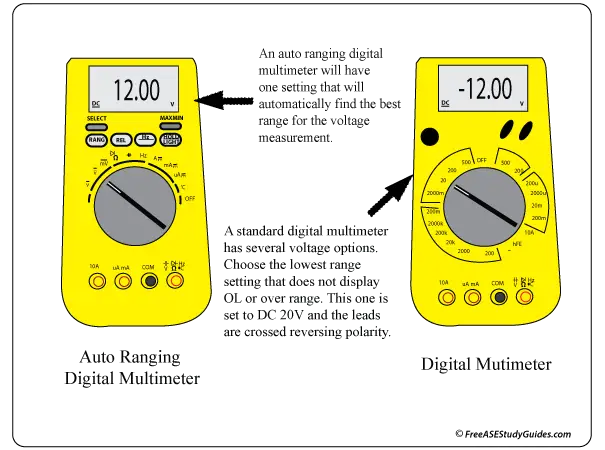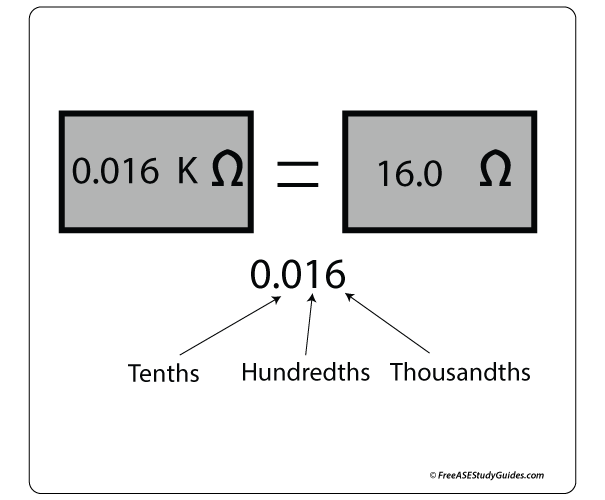Digital Multimeters

There is a difference between a digital manual multimeter and a digital auto-ranging multimeter. Auto-ranging multimeters automatically adjust to the voltage or ohm setting to test the component or circuit.

With a conventional manual multimeter, the user would know beforehand or rotate the dial to find the appropriate range. Start at a high value, and move the dial down until you see the appropriate range. An auto-ranging multimeter automatically finds the range and indicates it on the screen for the technician. This is great when working with sensors, circuit boards, and resistors. Resistors have banded color codes that often require a chart to identify. Finding the resistance is quick and easy with an auto-ranging multimeter.
Most auto-ranging digital meters contain fuses or circuit protection for today's sensitive circuits. This is a big plus over the older analog dial meters. If the technician were looking for 1.35 kiloohms, the meter would automatically set to kiloohms and indicate this number on the screen. A manual meter set to ohms may indicate 0.001, confusing the operator and the test results.

In the illustration above, the technician has set a manual multimeter to kiloohms and retrieved a reading of .016 K ohms. Since the meter is set for kiloohms, it is .016 x (K), or times (1000) equals 16 ohms. Just move the decimal three positions to the right. They are equal. The technician could have moved the manual lever to the ohms position and retrieved 16 Ohms. If the meter displayed .009 kiloohms, it would indicate 9 ohms of resistance. They, too, are equal.